In recent years, the contact grill market has experienced a significant surge in popularity, particularly in Europe and America. This trend is not only driven by the growing demand for healthier cooking methods but also by the increasing preference for personalized and customized kitchen appliances. As consumers seek out unique and high-quality cooking solutions, the role of made-to-order factories in crafting tailored contact grills has become pivotal. This article delves into the dynamic market landscape of contact grills, exploring the factors that are fueling industry growth, the challenges and opportunities that arise, and the evolving consumer preferences shaping the future of this niche market.
Introduction to Contact Grill Market Trends
The contact grill market has been witnessing a surge in popularity, driven by the growing demand for healthier cooking methods and the convenience it offers to consumers. As the heart of modern kitchens continues to evolve, contact grills, also known as flat grills or countertop grills, have emerged as a preferred choice for those looking to enjoy the flavors of outdoor grilling indoors. This section delves into the latest market trends that are shaping the contact grill industry.
One of the most significant trends is the shift towards healthier cooking options. With health consciousness on the rise, consumers are increasingly seeking appliances that allow them to prepare meals with minimal oil or fat. Contact grills are perfectly suited for this purpose, as they distribute heat evenly, allowing food to sear on the outside while keeping the inside moist and flavorful. This trend is expected to continue, with a projected growth in demand for contact grills that offer adjustable heat settings and non-stick surfaces.
Another trend is the customization of kitchen appliances to meet individual preferences. Made-to-order contact grills are becoming more common, as consumers seek products that cater to their specific needs. Whether it’s a unique design, specialized cooking surface, or additional features like adjustable temperature controls, made-to-order factories are responding to this demand by offering a wide range of customization options.
In the European market, there is a strong preference for eco-friendly and energy-efficient appliances. Contact grills that are designed with sustainability in mind are gaining traction, as consumers are becoming more environmentally conscious. Energy-saving features, such as automatic shut-off and energy-saving modes, are becoming standard in many contact grill models.
The American market, on the other hand, is characterized by a high level of innovation and technological advancement. Contact grills equipped with smart features, such as Bluetooth connectivity and remote control capabilities, are becoming increasingly popular. These smart grills allow users to monitor and control the cooking process from their smartphones, adding a new layer of convenience to the cooking experience.
In terms of materials, there is a noticeable trend towards the use of high-quality, durable materials in contact grill construction. Stainless steel and ceramic-coated surfaces are preferred for their ability to withstand high temperatures and their ease of cleaning. These materials also contribute to the longevity of the appliance, ensuring that it remains a reliable tool in the kitchen for years to come.
The rise of the contact grill market is also being fueled by the expansion of online sales channels. As more consumers turn to e-commerce for their shopping needs, the availability of contact grills through online retailers is expanding. This has made it easier for consumers to compare different models, read reviews, and make informed purchasing decisions.
Moreover, the influence of social media and cooking influencers is playing a pivotal role in shaping the contact grill market. As these influencers showcase their culinary creations using contact grills, they are not only promoting the product but also inspiring a new generation of home chefs to embrace the versatility and convenience of this appliance.
Despite these positive trends, the contact grill market is not without its challenges. One of the main concerns is the competition from other cooking appliances, such as induction cooktops and air fryers, which offer similar benefits. To maintain a competitive edge, contact grill manufacturers must continue to innovate and offer unique features that differentiate their products.
In conclusion, the contact grill market is experiencing a dynamic phase, marked by a growing demand for healthier, customized, and technologically advanced cooking solutions. As consumers continue to seek out the best appliances for their kitchens, the contact grill market is poised for further growth, driven by these evolving trends.
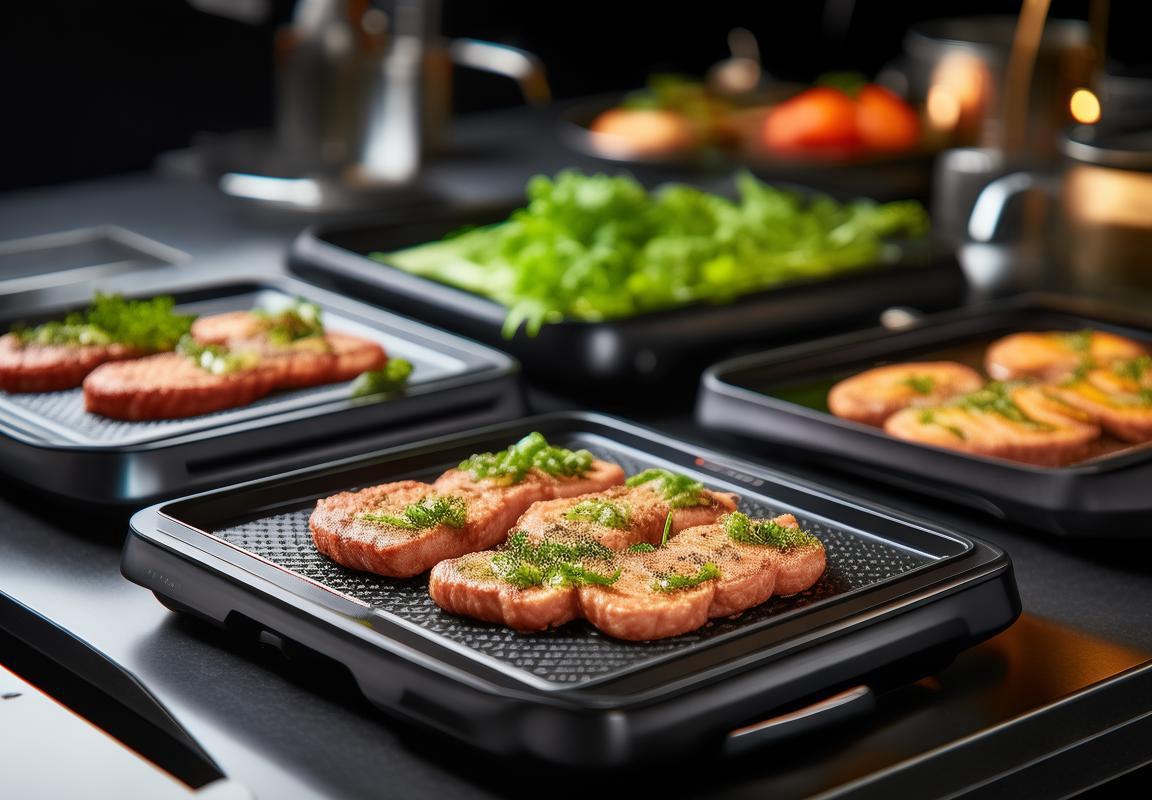
The Rise of Made-to-Order Products in Kitchen Appliances
In recent years, the kitchen appliance industry has witnessed a significant shift towards made-to-order products. This trend is reshaping how consumers approach their home kitchens, offering personalized solutions that cater to individual needs and preferences. The rise of made-to-order products in the kitchen appliances sector is driven by several factors, including technological advancements, evolving consumer demands, and the desire for unique, high-quality appliances.
Manufacturers are increasingly recognizing the value of customization in kitchen appliances. By offering made-to-order options, they can appeal to a broader market segment that seeks personalized solutions. Customization can range from simple changes like color or finish to more complex modifications such as specialized features or components.
The integration of smart technology has also played a pivotal role in the growth of made-to-order kitchen appliances. As consumers become more tech-savvy, they are looking for appliances that not only enhance their cooking experience but also integrate seamlessly with their smart home systems. Made-to-order appliances can be tailored to include the latest smart features, ensuring that homeowners have the most up-to-date technology at their fingertips.
One of the key drivers behind the rise of made-to-order products is the increasing diversity in consumer preferences. No longer are kitchen appliances seen as a one-size-fits-all solution. Today’s consumers are more likely to seek out appliances that match their lifestyle, kitchen layout, and aesthetic tastes. For instance, a family with small children might opt for a kitchen appliance with child-friendly features, while a professional chef might require a high-end model with precise temperature control.
The demand for made-to-order appliances is also influenced by the growing trend of kitchen remodeling and upgrades. Homeowners are investing in their homes more than ever before, and they are willing to spend extra for unique, high-quality appliances that stand out. Made-to-order products provide the opportunity to create a cohesive and personalized kitchen design, which can significantly increase property value.
Moreover, made-to-order kitchen appliances are becoming more accessible thanks to the advancements in manufacturing processes. New technologies have made it possible for manufacturers to produce customized products with greater efficiency and at a competitive cost. This has allowed even smaller companies to enter the market and offer unique made-to-order solutions.
Another aspect contributing to the rise of made-to-order products is the growing importance of sustainability and eco-friendly practices. Consumers are increasingly aware of the environmental impact of their purchases and are looking for appliances that are energy-efficient and made from sustainable materials. Made-to-order appliances can be tailored to meet these eco-conscious demands, offering consumers a choice that aligns with their values.
In the commercial sector, made-to-order kitchen appliances are also gaining popularity. Restaurants, hotels, and other commercial kitchens are seeking appliances that are not only durable and efficient but also tailored to their specific needs. This could include appliances designed for high-volume cooking, speciality kitchens, or specific food preparation methods.
Despite the many benefits of made-to-order products, there are challenges that the industry must overcome. One of the primary challenges is the complexity of managing a made-to-order production process. Customization requires more detailed design and manufacturing planning, which can be more resource-intensive and time-consuming. Additionally, inventory management becomes more complex, as there is no standard product to stock.
However, as the market continues to grow, manufacturers are adapting to these challenges by investing in new technologies and processes that streamline the customization process. This includes the use of 3D printing for prototypes, advanced software for design and engineering, and more efficient supply chain management.
In conclusion, the rise of made-to-order products in the kitchen appliance industry is a testament to the changing landscape of consumer preferences and the importance of personalization. As technology continues to evolve and manufacturing processes improve, we can expect to see even more innovative and tailored kitchen appliances hitting the market, offering consumers the opportunity to create truly unique and functional kitchens.
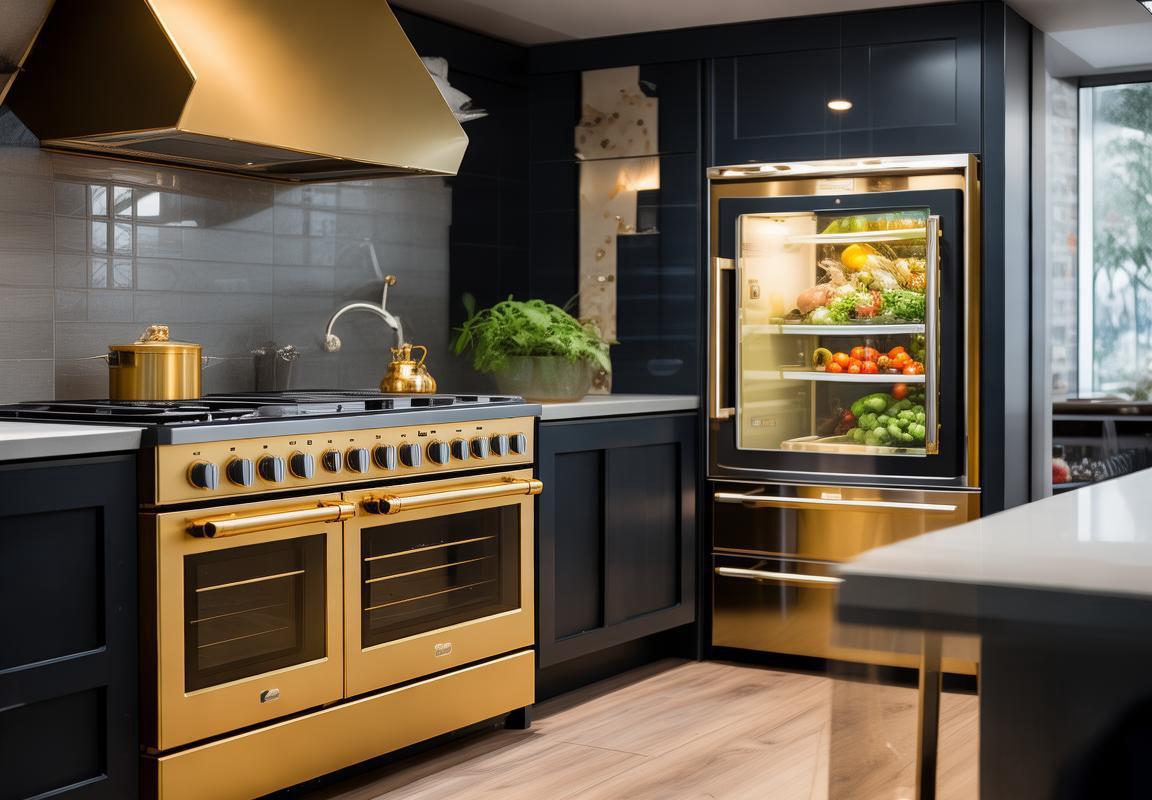
Contact Grill Market Dynamics in the European and American Sectors
The European and American sectors have long been at the forefront of technological advancements and consumer demand in the kitchen appliance industry. When it comes to contact grills, these markets exhibit unique dynamics that shape the global landscape.
In Europe, the contact grill market is characterized by a strong emphasis on health and wellness. Consumers are increasingly seeking cooking methods that minimize oil usage and preserve the natural flavors of food. This preference has led to a surge in demand for high-quality, energy-efficient contact grills. Brands like Tefal and Morphy Richards have capitalized on this trend by offering a range of eco-friendly models that cater to the health-conscious consumer base.
The American market, on the other hand, is marked by a more diverse consumer landscape. From outdoor enthusiasts to urban apartment dwellers, the demand for contact grills spans a wide demographic. This diversity has fueled the innovation of various grill designs, from countertop models to portable units. Brands like George Foreman and Hamilton Beach have thrived by offering a variety of options that cater to different lifestyles and preferences.
In both regions, there is a growing trend towards smart kitchen appliances. Contact grills with built-in temperature controls and Wi-Fi connectivity are becoming increasingly popular. These smart features not only enhance the cooking experience but also provide users with convenience and peace of mind. For example, the ability to monitor and control the grill remotely via a smartphone app allows for precise cooking even when the user is away from the kitchen.
Another significant dynamic in both the European and American sectors is the focus on sustainability. As environmental concerns continue to rise, manufacturers are under pressure to produce appliances that are not only energy-efficient but also have a minimal environmental footprint. This has led to the development of contact grills made from recycled materials and those that can be easily disassembled for recycling at the end of their life cycle.
The European market is also seeing a rise in the use of contact grills for commercial purposes. Restaurants and cafes are increasingly adopting these appliances due to their versatility and the ability to cook a variety of foods quickly and efficiently. This has spurred the demand for commercial-grade contact grills that can withstand heavy use and are built with durability in mind.
In the United States, the contact grill market is influenced by the popularity of outdoor cooking and grilling culture. The demand for high-performance grills that can handle larger quantities of food and withstand various weather conditions is robust. Brands that offer a range of sizes and power outputs to cater to different outdoor grilling needs have found a niche market within this sector.
The distribution channels for contact grills in both Europe and America are also evolving. Online sales have seen a significant increase, with more consumers turning to e-commerce platforms for convenience and a wider selection. This shift has forced traditional retailers to adapt by offering online purchasing options and enhancing their online presence.
Moreover, the European and American markets are seeing a surge in the popularity of gourmet and specialty food products. This trend has influenced the contact grill market, with consumers seeking appliances that can help them recreate the flavors and textures of their favorite gourmet dishes at home. Brands that offer specialized attachments and accessories for contact grills, such as searing plates or non-stick surfaces, are capitalizing on this demand.
In conclusion, the contact grill market in both Europe and America is dynamic, driven by consumer preferences for health, convenience, sustainability, and innovation. As these markets continue to evolve, manufacturers will need to stay attuned to changing trends and consumer needs to maintain a competitive edge.
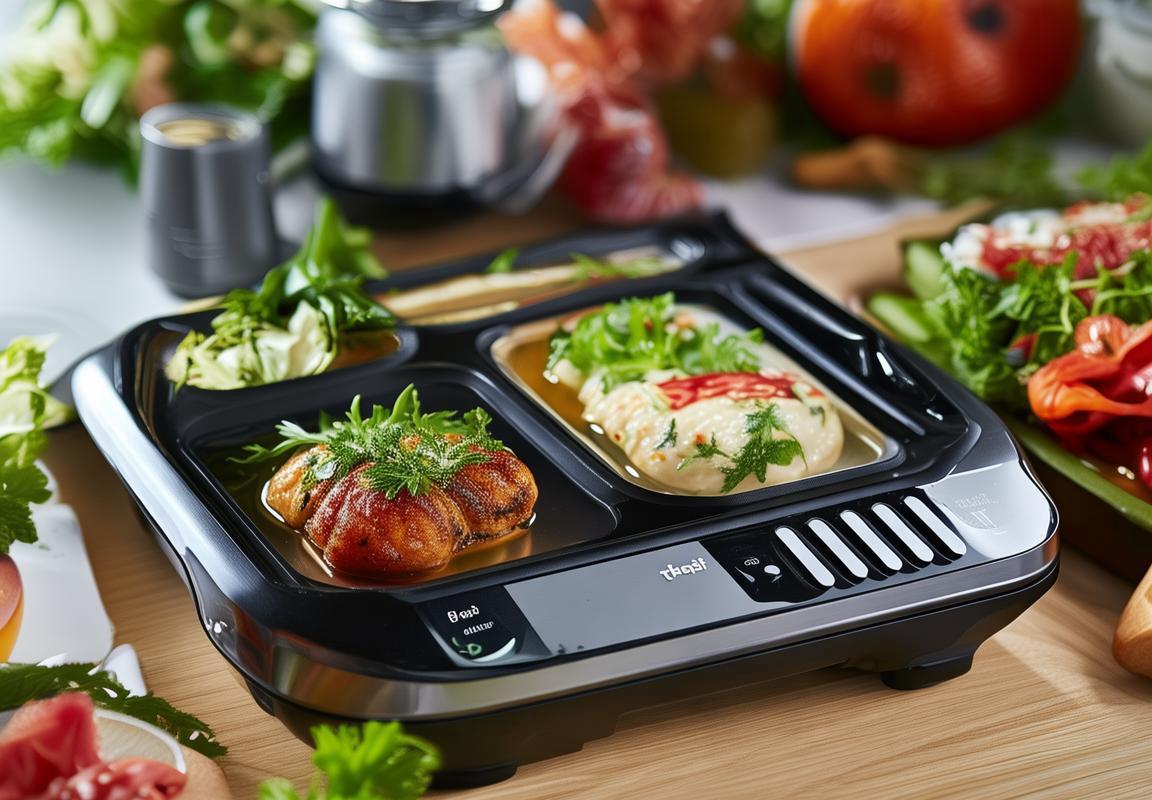
Key Factors Driving Growth in the Contact Grill Industry
The contact grill industry has experienced significant growth over the years, and several key factors have contributed to this upward trajectory. Here’s a closer look at these driving forces:
-
Consumer Health AwarenessThere’s been a notable shift in consumer preferences towards healthier eating habits. Contact grills offer a healthier alternative to traditional grilling methods, as they cook food with less oil, reducing the fat content. This health-conscious trend has propelled the demand for contact grills among consumers looking to minimize their intake of unhealthy fats.
-
Technological AdvancementsAdvancements in technology have made contact grills more efficient, user-friendly, and versatile. Features like adjustable heat settings, non-stick surfaces, and digital temperature controls have improved the cooking experience, making contact grills more appealing to both novice and experienced cooks. These technological improvements have also expanded the market for premium contact grill models.
-
Diverse Cooking OptionsContact grills are not just for burgers and hot dogs anymore. Modern contact grills can be used to prepare a wide range of dishes, from seared steaks and vegetables to sandwiches and even desserts. The versatility of these appliances has broadened their appeal, attracting a diverse group of consumers with varying culinary interests.
-
Popularity of Outdoor LivingWith the increasing popularity of outdoor living spaces, such as patios, balconies, and decks, there’s a growing demand for compact and portable cooking appliances. Contact grills fit this niche perfectly, offering a convenient way to enjoy grilled meals without the need for a full-size grill. This outdoor cooking trend has directly influenced the growth of the contact grill market.
-
Market Expansion in Emerging RegionsThe contact grill industry has seen substantial growth in emerging regions, particularly in Asia and Latin America. As these regions experience economic growth and urbanization, consumers are adopting Western cooking methods and appliances, including contact grills. This expansion has opened up new markets and opportunities for contact grill manufacturers.
-
Environmental ConsiderationsSustainability is a major concern for many consumers today. Contact grills, being energy-efficient and requiring less fuel compared to larger grills, are seen as more environmentally friendly options. The growing awareness of climate change and the need for eco-friendly practices has positively impacted the contact grill market.
-
Retail Channels and E-commerceThe rise of e-commerce has made contact grills more accessible to consumers worldwide. Online retailers offer a wide variety of products, including budget-friendly options and high-end models, making it easier for consumers to find the perfect contact grill for their needs. Additionally, traditional retail channels continue to drive sales, with many retailers offering a mix of in-store and online purchasing options.
-
Branding and Marketing EffortsEffective branding and marketing strategies have played a crucial role in the growth of the contact grill industry. Manufacturers have focused on highlighting the benefits of their products, such as ease of use, health advantages, and the ability to create restaurant-quality meals at home. These campaigns have helped to create a strong brand image and increase consumer trust in the product category.
-
Collaborations with Chefs and InfluencersCollaborations with renowned chefs and food influencers have been another key factor in driving growth. These partnerships often result in unique product designs, exclusive recipes, and educational content that showcase the capabilities of contact grills. This has not only helped to increase sales but also raised the profile of contact grills within the culinary community.
-
Economic Growth and Consumer Spending PowerEconomic growth in many countries has led to an increase in consumer spending power. As people have more disposable income, they’re more likely to invest in high-quality kitchen appliances like contact grills. This economic factor has been a consistent driver of industry growth, as consumers seek to enhance their home cooking experiences.

The Role of Made-to-Order Factories in Customizing Contact Grills
In recent years, the demand for customized kitchen appliances has surged, and contact grills are no exception. Made-to-order factories have become pivotal in this trend, offering tailored solutions that cater to the specific needs and preferences of consumers. Here’s a deeper look into how these factories are shaping the customization landscape for contact grills.
The Tailoring of Features and SpecificationsMade-to-order factories for contact grills understand that one size does not fit all. They offer a range of features and specifications that can be customized to suit different cooking styles and dietary requirements. From adjustable heat settings to non-stick surfaces and various grill plates, these factories provide a plethora of options that allow customers to choose the perfect grill for their kitchen.
Personalized Design and BrandingBeyond functionality, made-to-order factories also cater to the aesthetic preferences of consumers. They offer personalized design services, allowing customers to select from a variety of colors, finishes, and even custom branding. This level of personalization not only adds a unique touch to the kitchen but also serves as a statement of individuality.
Quality Control and Manufacturing ExpertiseCustomization doesn’t come at the cost of quality. Made-to-order factories pride themselves on their rigorous quality control processes. They use advanced manufacturing techniques and high-quality materials to ensure that every contact grill meets the highest standards. From the initial design to the final assembly, these factories maintain a commitment to excellence.
Customization for Commercial and Industrial UseThe demand for customized contact grills extends beyond residential use. Made-to-order factories also cater to commercial kitchens, restaurants, and even industrial settings. They can design grills that are more robust and durable, capable of handling high-volume cooking and the demands of a professional kitchen environment.
Innovation and Technology IntegrationTechnology plays a significant role in the customization of contact grills. Made-to-order factories often integrate smart features such as temperature control systems, LED displays, and Bluetooth connectivity. These advancements not only enhance the cooking experience but also provide users with convenience and control over the grilling process.
Sustainability and Eco-Friendly SolutionsWith growing environmental concerns, made-to-order factories are also focusing on sustainability. They offer eco-friendly options, including grills made from recycled materials and energy-efficient designs. This commitment to sustainability resonates with consumers who are increasingly looking for products that align with their eco-conscious values.
Adaptation to Market TrendsThe made-to-order factories that specialize in contact grills are adept at adapting to market trends. They stay informed about the latest foodie fads and consumer preferences, ensuring that their customized products remain relevant. Whether it’s a surge in interest in healthy grilling options or a demand for compact grills for smaller living spaces, these factories are quick to respond.
Flexible Production and Short Lead TimesOne of the advantages of working with made-to-order factories is the flexibility they offer in production. They can often accommodate last-minute changes or rush orders without compromising on quality. This agility is particularly beneficial for businesses looking to keep up with the fast-paced appliance market.
Customer Feedback and Continuous ImprovementMade-to-order factories understand the importance of customer feedback. They actively seek out customer insights to improve their products and services. This feedback loop ensures that each customized contact grill is not just a product but a reflection of the customer’s needs and desires.
Global Reach and Diverse Customer BaseThe reach of made-to-order factories is vast, serving customers from all corners of the globe. This diverse customer base includes not only individual consumers but also retailers, e-commerce platforms, and even corporate clients. The global nature of these factories allows them to offer a wide range of customization options that appeal to international tastes.
In conclusion, the role of made-to-order factories in customizing contact grills is multifaceted. They provide tailored solutions, maintain high-quality standards, adapt to market trends, and offer a level of personalization that resonates with consumers seeking unique kitchen appliances. As the demand for customization continues to grow, these factories are at the forefront, driving innovation and meeting the evolving needs of the market.
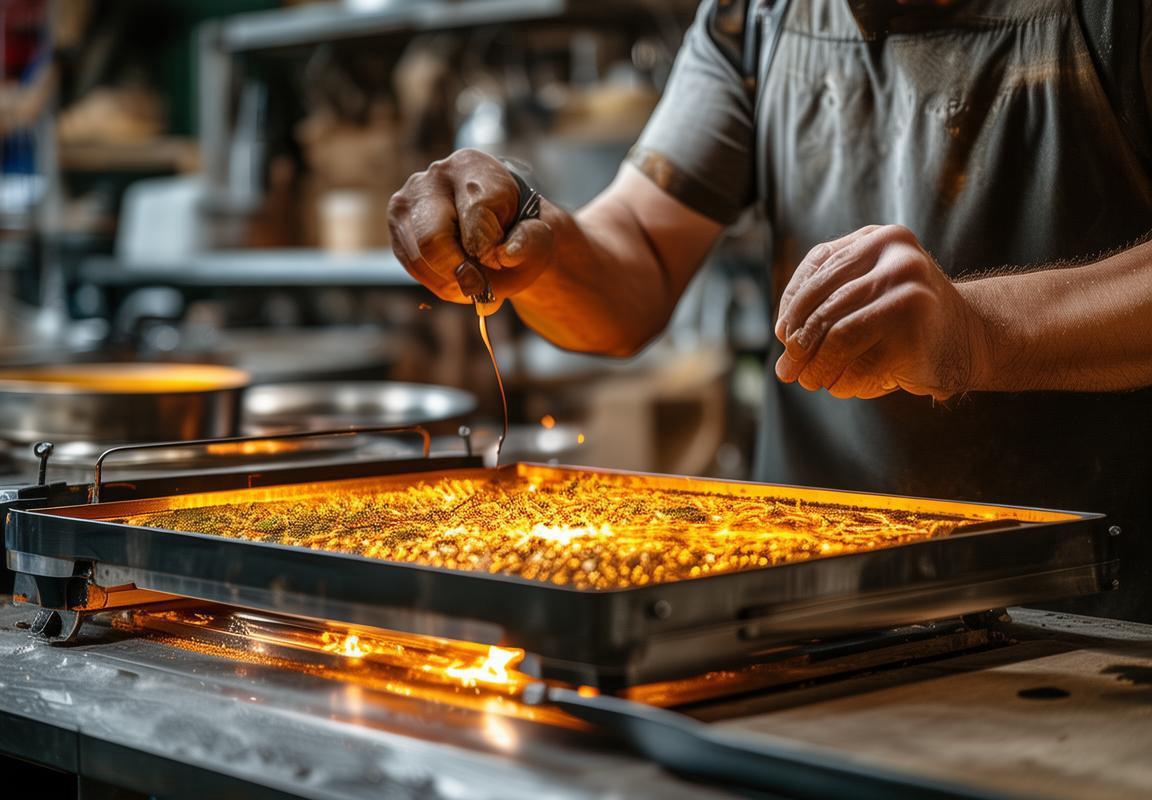
Case Studies: Successful Customization Projects by Made-to-Order Factories
In the realm of custom kitchen appliances, made-to-order factories have played a pivotal role in shaping the landscape of contact grill innovation. Let’s delve into some case studies that highlight the successful customization projects these factories have undertaken.
One such project involved a boutique restaurant in Paris that sought a contact grill with unique features to match their culinary ethos. The made-to-order factory, recognizing the need for a grill that could handle both delicate and robust meats, designed a unit with adjustable heat zones and a non-stick surface that was ideal for searing steaks and tenderizing fish. The result was a grill that not only met but exceeded the restaurant’s expectations, enhancing their patrons’ dining experience with precision and consistency.
Another case study comes from a family-run catering business in the United States that specialized in outdoor events. They required a contact grill that was both portable and durable, capable of withstanding the rigors of travel and multiple uses. The factory responded by crafting a rugged, lightweight model with a built-in temperature gauge and an easy-to-clean design. This customization allowed the business to offer their clients a seamless grilling experience, whether at a beachside barbecue or a corporate garden party.
A high-end hotel in London faced a unique challenge: their kitchen needed a contact grill that could accommodate an array of international dishes. The made-to-order factory collaborated closely with the hotel’s executive chef to develop a grill with multiple interchangeable surfaces—grill, sear, and bake—ensuring versatility for a wide range of recipes. The end product was a grill that not only matched the hotel’s standards of excellence but also became a centerpiece in their kitchen, allowing for the creation of signature dishes that reflected their global cuisine.
In a more corporate setting, a food service company in Germany was looking for a contact grill that could integrate seamlessly into their automated food production line. The made-to-order factory delivered a custom-built grill that was designed to work in harmony with their existing machinery, complete with programmable settings for specific cooking times and temperatures. This integration not only streamlined their production process but also improved the quality and consistency of their output, enhancing their reputation for efficient food service.
A sports arena in the United States needed a contact grill that could handle high volumes of food preparation, often under time constraints. The factory developed a high-capacity grill with quick heating capabilities and an advanced cleaning system, designed to maintain hygiene standards and reduce downtime. This custom grill not only met the venue’s operational needs but also became a symbol of efficiency and reliability for their patrons.
In the world of gourmet cuisine, a renowned chef in Italy sought a contact grill that could replicate the smoky flavors of traditional grills while also providing the even cooking of modern technology. The made-to-order factory created a grill that combined an innovative smoking element with a precise heat control system, allowing the chef to achieve the desired culinary results. This customization became a game-changer for the chef, enabling him to offer unique dishes that were both authentic and innovative.
These case studies demonstrate the versatility and expertise of made-to-order factories in the contact grill industry. From boutique restaurants to corporate kitchens, their ability to customize grills to specific needs has not only driven growth in the industry but has also elevated the standards of food preparation and service. The success of these projects underscores the importance of collaboration between factories and clients, as well as the innovative spirit that drives the continuous evolution of contact grill technology.
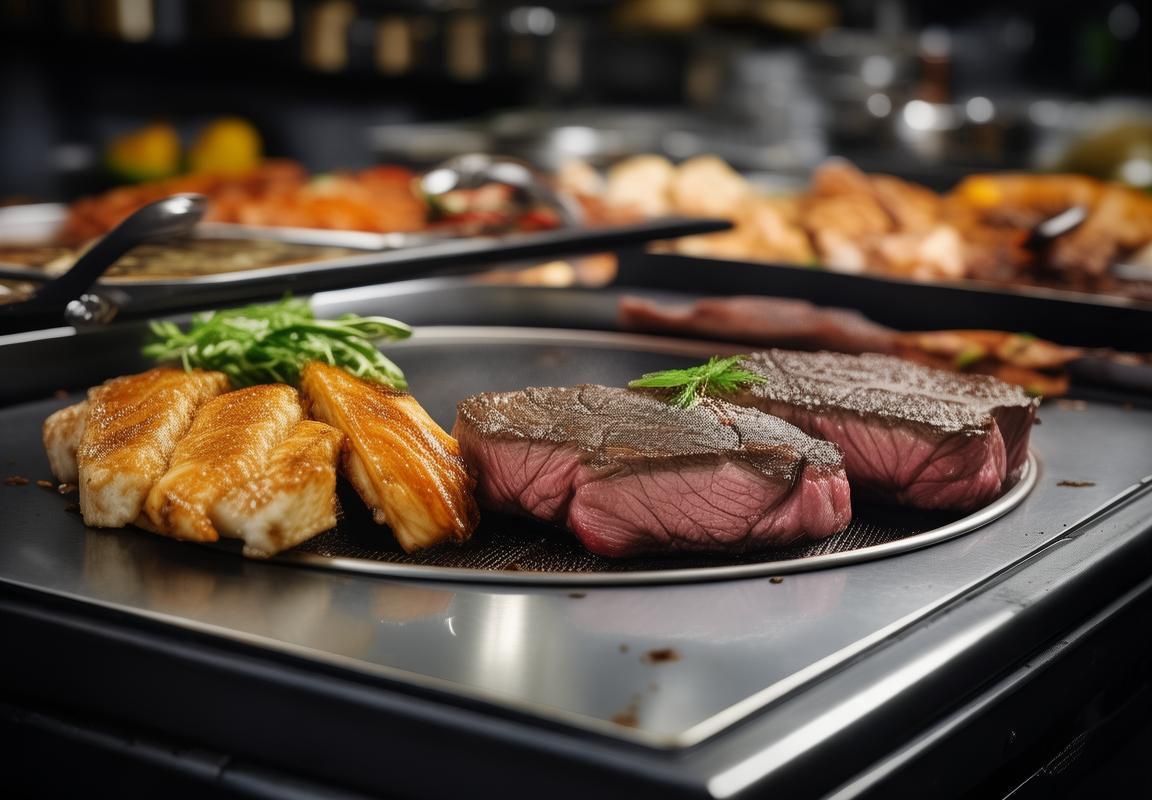
Challenges and Opportunities in the Contact Grill Made-to-Order Market
In the evolving landscape of the contact grill market, several challenges and opportunities have emerged, shaping the trajectory of made-to-order factories and their impact on this niche sector.
The demand for personalized and specialized appliances has surged, leading to a competitive market where innovation is key. Made-to-order factories must navigate this environment by offering solutions that cater to unique customer needs while maintaining efficiency and cost-effectiveness.
One significant challenge is the need for precise manufacturing capabilities. Customization often requires intricate designs and precise engineering, which can be a complex task for factories already managing a high volume of standard products. Ensuring that each order meets the exact specifications of the customer can be a delicate balance between quality and production time.
Moreover, the challenge of inventory management is pronounced in the made-to-order market. Traditional inventory systems are not suitable for products that are produced on demand. Factories must implement sophisticated inventory tracking systems to manage raw materials and components, avoiding overstocking or stockouts.
On the flip side, there are numerous opportunities for growth and innovation. The rise of e-commerce has made it easier for customers to request custom products, expanding the market reach for made-to-order factories. This digital transformation has also streamlined the ordering process, reducing the time from request to delivery.
Customization allows for unique product features that can set a brand apart from competitors. Made-to-order factories can capitalize on this by offering a range of options, from different grill plates to adjustable heat settings, enhancing the user experience and potentially justifying a premium price point.
Sustainability is another opportunity that made-to-order factories can exploit. By producing appliances on demand, they can reduce waste associated with overproduction. This eco-friendly approach not only appeals to environmentally conscious consumers but can also serve as a competitive advantage in a market increasingly focused on sustainability.
However, with opportunities come risks. One such risk is the potential for high variability in pricing due to the bespoke nature of the products. The cost of materials and labor can fluctuate widely depending on the complexity of the order, which might affect the perceived value of the product to the consumer.
Moreover, the challenge of maintaining quality control in a customized environment cannot be overlooked. Each product must meet the high standards expected by customers, which requires rigorous quality assurance processes. Failure to do so can lead to negative reviews and a damaged reputation.
Another opportunity lies in the integration of smart technology. By offering contact grills with advanced features like Bluetooth connectivity and remote control, made-to-order factories can tap into a growing market segment interested in smart home appliances. This not only adds value to the product but also opens up new revenue streams through software updates and subscription services.
Lastly, the globalization of the contact grill market presents both challenges and opportunities. Factories must adapt to varying regulatory standards and consumer preferences across different regions. On the positive side, this diversity can lead to the development of a more versatile product range, capable of appealing to a broader international audience.
In conclusion, the contact grill made-to-order market is rife with challenges, such as inventory management and quality control, but it also brims with opportunities, from market expansion through e-commerce to innovation in sustainability and smart technology. Navigating these complexities will be crucial for made-to-order factories looking to thrive in this dynamic industry.
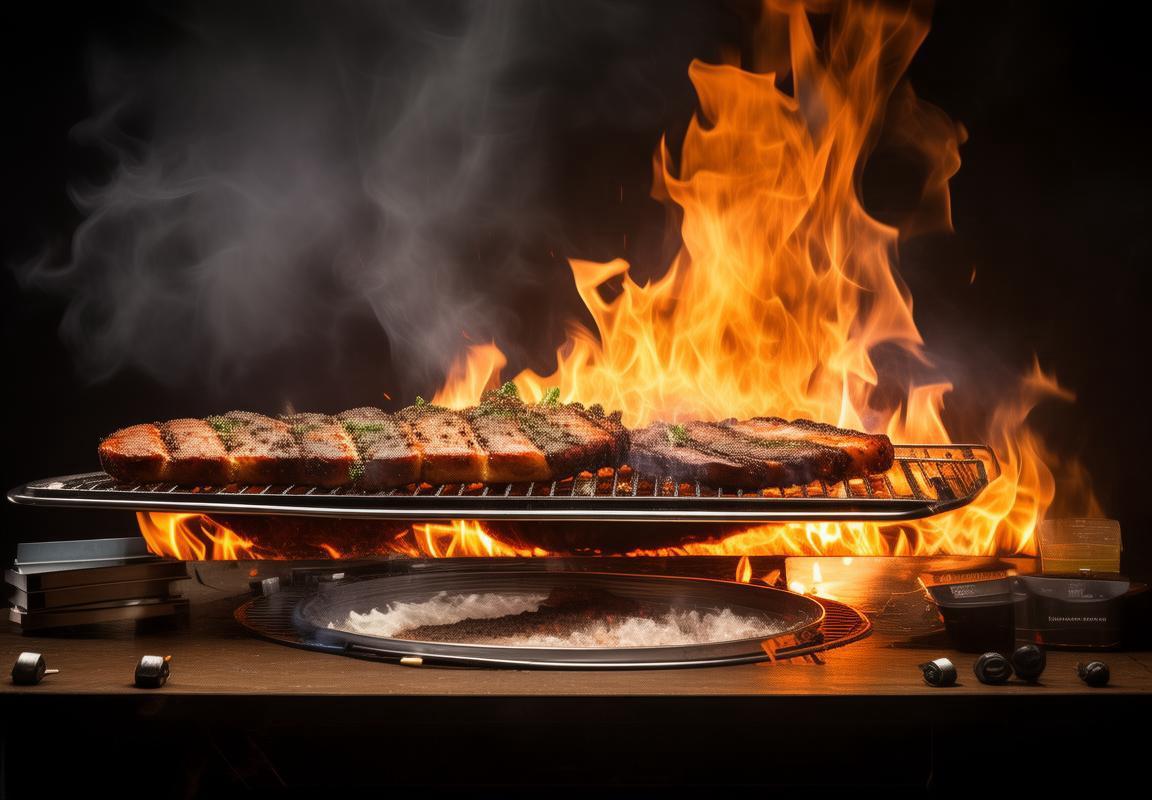
Consumer Preferences and Trends in Contact Grill Demand
In the evolving landscape of kitchen appliances, contact grills have emerged as a popular choice among consumers. The demand for these versatile cooking devices has been shaped by a variety of factors, reflecting changing preferences and culinary trends. Here’s a closer look at the consumer preferences and trends driving the contact grill market.
-
Health and Wellness FocusConsumers are increasingly conscious of their health and are gravitating towards cooking methods that offer healthier alternatives to traditional frying. Contact grills, with their ability to cook food with minimal oil, align perfectly with this trend. The demand for low-fat and low-calorie cooking options has surged, making contact grills a favorite among health-conscious consumers.
-
Convenience and SpeedModern lifestyles demand quick and efficient cooking solutions. Contact grills provide a convenient way to prepare a variety of dishes in a short amount of time. The ease of use, coupled with the ability to cook multiple items simultaneously, has made these grills a staple in busy households and on-the-go lifestyles.
-
Versatility in Cooking TechniquesContact grills are not just for searing meat; they offer a range of cooking techniques, including grilling, pan-frying, and even toasting. This versatility has expanded the appeal of contact grills to a broader audience, including those who enjoy experimenting with different cooking methods.
-
Design and AestheticsThe aesthetic appeal of kitchen appliances has become a significant factor in consumer decisions. Contact grills with sleek designs and modern aesthetics are gaining popularity, as they not only serve a functional purpose but also enhance the visual appeal of kitchen countertops.
-
Technology IntegrationThe integration of technology into contact grills has opened up new possibilities. Features like digital temperature controls, non-stick surfaces, and removable cooking plates have made these grills more user-friendly and adaptable to various cooking needs. Consumers are drawn to these technological advancements, which promise a more precise and efficient cooking experience.
-
Eco-Friendly and Sustainable CookingThere is a growing trend towards sustainability, and kitchen appliances that are eco-friendly or have a lower carbon footprint are becoming more attractive to consumers. Contact grills that use less energy or are made from recycled materials are likely to resonate with environmentally conscious buyers.
-
Customization and PersonalizationConsumers are seeking more personalized experiences, and this extends to kitchen appliances as well. The ability to customize contact grills with specific features, such as different grill patterns, sizes, and even unique color options, is appealing to those who want a kitchen appliance that reflects their personal style.
-
Social Media InfluenceThe rise of social media has significantly impacted consumer preferences. High-quality images and videos of contact grill recipes and cooking techniques shared by influencers and chefs have sparked interest in these appliances. The social proof provided by online communities has influenced purchasing decisions.
-
Price SensitivityWhile health and convenience are key drivers, price remains a critical factor. Consumers are looking for value for money, and contact grills that offer a balance between quality, features, and affordability are more likely to be purchased.
-
Brand Trust and ReputationThe reputation of the brand plays a crucial role in consumer choice. Brands with a strong presence in the market, known for their quality and reliability, tend to have a loyal customer base. Consumers are more likely to invest in a contact grill from a trusted brand, even if it means paying a premium.
The demand for contact grills is influenced by a complex interplay of factors, from health and convenience to technology and personalization. Understanding these consumer preferences and trends is essential for manufacturers and retailers to meet the evolving needs of the market.

Technology Integration in Customized Contact Grills
In the realm of kitchen appliances, technology has been a game-changer, especially when it comes to contact grills. The integration of advanced tech into these cooking devices has not only enhanced their functionality but has also shaped consumer preferences. Let’s delve into the various technological advancements that have become synonymous with customized contact grills.
The evolution of heating elements has been a pivotal development. Early contact grills relied on simple, fixed heating elements that delivered consistent heat but lacked precision. Today, these have been replaced by programmable and adjustable heating systems that offer a range of temperatures and cooking settings. This allows users to achieve specific grill marks and control the doneness of their food more effectively.
Smart sensors are another innovation that has found its way into customized contact grills. These sensors monitor the internal temperature of the food, ensuring that it is cooked to the desired level of doneness. This technology is particularly beneficial for those who prefer their meats to be cooked to a precise temperature, such as chefs or food enthusiasts who value culinary precision.
In the realm of design, the integration of digital interfaces has become increasingly popular. Modern contact grills often come with digital displays that allow users to easily select their preferred cooking mode, set the temperature, and monitor the cooking process. This user-friendly interface is especially appealing to those who are not as familiar with the intricacies of grilling and appreciate the convenience of a step-by-step guide.
One of the most significant technological advancements in customized contact grills is the inclusion of non-stick coatings. These coatings are not just for ease of cleaning but also for health reasons. They reduce the need for oil, which can cut down on the fat content of the food and potentially lower the risk of heart disease. Additionally, the improved non-stick properties mean that the grills can be used with a wider variety of cooking techniques and ingredients.
Safety features have also been a focus in the technological integration of contact grills. Modern models often include features like automatic shut-off timers, which can prevent overheating and reduce the risk of fire. This is particularly important in homes with children or pets, as it adds an extra layer of security.
The customization of contact grills has also been enhanced by the integration of Bluetooth technology. Users can now connect their grills to their smartphones, allowing them to control the grill remotely. This is especially useful for those who want to start cooking before they arrive home or for those who enjoy grilling in the comfort of their outdoor seating area.
Another technological marvel is the inclusion of LED lighting. These lights illuminate the cooking surface, making it easier to see what you’re grilling and ensuring that every part of the food receives even cooking. This feature is particularly appreciated by night-time grillers or those who prefer to cook in low-light conditions.
In terms of energy efficiency, contact grills have seen improvements as well. Modern models are designed to use less energy while still maintaining high cooking temperatures. This not only saves on electricity bills but also contributes to a greener, more sustainable kitchen environment.
The integration of these technologies into customized contact grills has opened up a world of possibilities for consumers. From precise temperature control to smart connectivity, the evolution of technology has made these cooking devices more versatile, efficient, and user-friendly. As technology continues to advance, we can expect to see even more innovative features that will further enhance the contact grill experience.
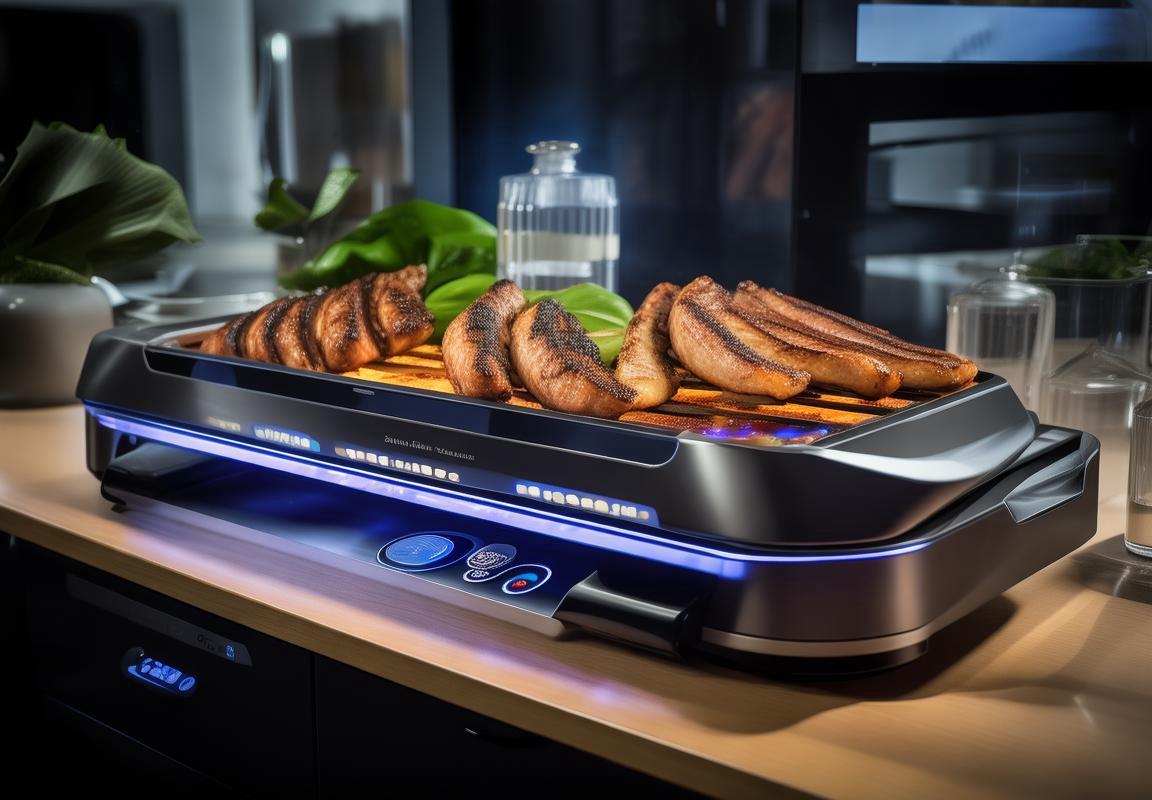
Conclusion: The Future of Contact Grill Manufacturing and Customization
The evolution of contact grill manufacturing and customization is a testament to the ever-growing demand for personalized and technologically advanced kitchen appliances. As we delve into the future, it’s clear that several factors will shape the landscape of this industry.
Innovation in materials and design continues to push the boundaries of what contact grills can offer. High-quality stainless steel, advanced non-stick coatings, and ergonomic handles are just a few examples of how manufacturers are enhancing the user experience. The integration of smart technology, such as Bluetooth connectivity and temperature control apps, is also becoming more prevalent, allowing consumers to tailor their grilling experience to their preferences.
The rise of eco-conscious consumers has led to a surge in demand for energy-efficient appliances. Contact grill manufacturers are responding by incorporating energy-saving features and sustainable materials into their products. This shift not only appeals to environmentally friendly consumers but also aligns with global efforts to reduce carbon footprints.
Customization is no longer just a niche market; it’s becoming a standard offering in the contact grill industry. Made-to-order factories are at the forefront of this trend, providing customers with the ability to select from a wide range of features, from different grill plates and cooking surfaces to unique color options and additional accessories. This level of personalization not only caters to individual tastes but also opens up new revenue streams for manufacturers.
However, the path to customization isn’t without its challenges. Ensuring quality control and efficient production processes in a made-to-order environment can be complex. Factories must balance the flexibility of customization with the need for streamlined operations. This often requires sophisticated inventory management systems and advanced production techniques to maintain high standards without compromising on lead times.
Market demand for contact grills is also influenced by lifestyle trends. The popularity of outdoor cooking, health-conscious eating habits, and the desire for convenience are all driving factors. As such, manufacturers are focusing on creating grills that are easy to use, clean, and transport, while still delivering exceptional cooking performance.
The integration of social media and online platforms has significantly impacted the contact grill market. Consumers are more likely to research and purchase products based on reviews and recommendations from peers. This has led to a greater emphasis on brand reputation and customer service. Factories that excel in these areas are better positioned to capture market share.
Globalization has also played a role in the contact grill industry’s growth. As trade barriers continue to fall, manufacturers can tap into international markets with ease. This has resulted in a more competitive landscape, with factories around the world vying for the same customers. To stand out, many are investing in research and development to create unique features and designs.
Despite the challenges, the opportunities in the contact grill made-to-order market are vast. The ability to offer a high degree of personalization combined with technological advancements and environmental considerations makes this sector ripe for innovation. As the industry evolves, it’s likely that we’ll see even more creative solutions and products that cater to a diverse range of consumer needs.
In conclusion, the future of contact grill manufacturing and customization is bright. The industry is poised to continue its growth trajectory, driven by a combination of technological innovation, consumer demand for personalization, and a focus on sustainability. As long as manufacturers stay attuned to these factors, they can expect to thrive in an ever-changing market landscape.